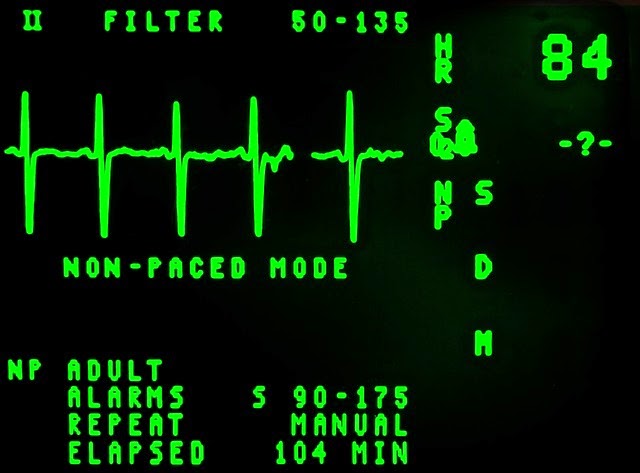A few weeks back I posted an excerpt on the book I’m working on about Oliver’s birth. After trudging through this thing for about two years now, I finally finished my first draft. In celebration, I’m posting the intro here. It’s still a work in progress, so I’d love feedback.
Close your eyes.
Wait, don’t do that. You have to read what’s next. Unless someone’s reading this to you. Or your listening to an audiobook that someone made without my permission.
Whatever.
Picture this scene, eyes open or closed:
Camera pans up, passing through a door. The room is only partially lit, a pathetic amount of sunlight hazily drifting through windows on the far side of the room. The camera moves past the back of a disheveled man, standing frozen and helpless, staring forward at something you can’t see.
Cue the beeps. The rhythmic, electronic drone, ticking off like a metronome on an Atari 2600. The scene doesn’t show you the source of the sound, but, of course, you already know what it is. You’ve heard it again and again, so much that it’s been ingrained in your mind like a computer virus.
New angle. A hospital bed. The patient lying on it, eyes closed, so peaceful they could almost be asleep. And, of course, the little machine in the corner, a black screen with a green line. Like clockwork, the line jumps up like a seismograph in an earthquake for the briefest of seconds before dropping back down. Again and again.
You know what’s coming next. The beeping gets faster. The line jumps more and more, until it’s tearing off like a horse flayed by Indiana Jones’ bull whip. Then it stops, plummeting into a life-ending flat line.
Cue tears.
Memory is a funny thing. I can close my eyes at any second of any day and hear that beep almost as loudly as if I’d downloaded a Heart Beat app on my phone, to relive the worst part of every movie since the Jazz Singer introduced sound to cinema.
Despite the near instantaneous recollection of the noise, it’s always associated with movies. I spent months in the hospital. I can picture some of the minutest of detail, from snags in the carpet to scruffs on the floor. I can even see the little box with the black screen and the green line, pulsating in the corner.
Yet despite that, I can’t associate it with the steady, rhythmic beep. Such sound is the stuff of movies, added to the background of a tense scene signaling to our subconscious that, hey, this is serious, man! If they really had a beep on every patient in every room in every hospital, I imagine the institutionalization rate of nurses would skyrocket, each one screaming with wild eyes, “THE BEEPING! I CAN’T STOP THE BEEPING!” while fighting against their muscular wards.
None of this is to say that the monitors didn’t make noise. They did. They had alarms. In the real world, away from the silver screen, those alarms are the stuff of nightmares.
For months, every time that shrill, electronic percussion shot out of the little box, my mind would go wild, sending shocks of panic through me more than anything else could, before or since. Jittery hands would reach for the nearby pulsox, double checking that it was attached before tearing into the hallway, yelling for somebody, anybody to help.
That sound still haunts me. Just like the Hollywood beep immerses me in the drama without so much as a picture, hearing the actual alarm would pull me out of a coma. Or send me into one.
Despite that sound being drilled so far into my brain that not even a bullet could go deeper, my worst moment in the hospital had no alarms. There were no medical teams coming to the rescue, no life saving devices crafted by years of hard work and scientific experimentation, no cocky doctor sitting behind the glass, waiting until the last second to come in, shove everyone aside and save the day.
Turns out they don’t bother with any of that when they’ve already given up.
That’s what this book is about. The journey we took. The months in the hospital. The times when there was enough ruckus from the medical staff to make the most cinematic depiction look pathetic. And times when the alarms don’t sound.
